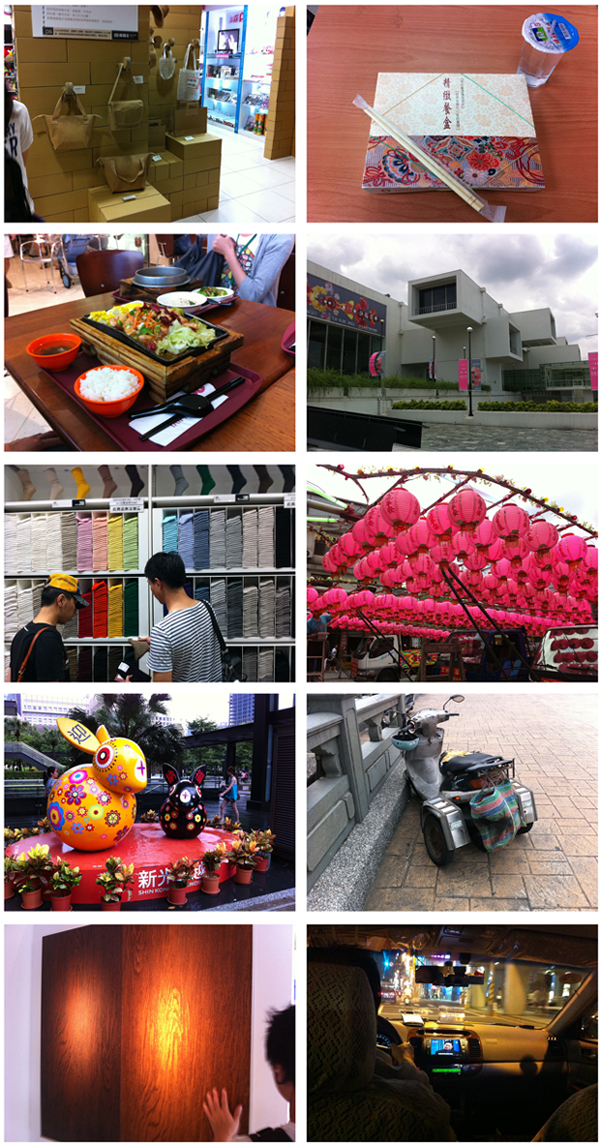HIGHLIGHTS FROM THE CONFERENCE:
Joachim Sauter @ ART+COM - http://www.artcom.de/en/profile/
His talk was so inspiring and cool. He talked a lot about combining digital and analog experiences in new media design. His approach was very pragmatic in terms of creating basic installations with clever installations that offer a beautiful choreography. He talked a lot about having the viewer doing a lot of the work in enjoying and interacting with the pieces. He showed a piece where people walk on an LED walkway, creating a ripple effect in the screen that transfers to an actual pond underneath. Another piece made for the BMW museum had 700+ steel balls hanging from strings moving up and down, creating this beautiful patterns. He also showed a collaboration with a composer there they integrated music with several of his pieces ( http://www.artcom.de/en/projects/project/detail/symphonie-cinetique-the-poetry-of-motion/ ) His comment about this integration was: "There is nothing more emotional than music" #Genius. What I loved the most was how passionate and poetic he was about describing his work. He even talked about creating creating a flow that connects consciousness and unconsciousness in his work!
=
Cynthia Smith @ Cooper-Hewitt Design for other 90% - http://www.designother90.org/
Her talk was full of great examples of design for social innovation. I really appreciated the stories behind many of this projects in terms of empowering under served communities. She also talked about how it is crucial for this type of projects to have business and marketing plans, otherwise they won't be sustainable and provide the economical support that most people in the world need.
=
Foad Hamidi @ York University - http://www.cse.yorku.ca/~fhamidi/CV.html
He showed a series of projects that made very cool connections between physical and virtual spaces. His approach was very fun and insightful and he is very interested in combining critical thinking with making.... turning it into Critical Making!
=
Leslie Speer @ San Jose State University - http://simplelimb.com/
Stefania Sansoni @ University of Strathclyde - https://pure.strath.ac.uk/
While Leslie and Stefania did not present together, both of them presented about prosthetics and enabling more socially responsible and emotional connections with the users. Their presentations complemented each other quite well and made people think about how to raise the level of apparently utilitarian products.
=
Geke Ludden @ University of Twente - http://home.ctw.utwente.nl/luddengds/
She talked about design for healthy behavior. Her presentation was filled with thought-provoking stats such as how in the last year in the US the fitness industry grew 9% while obesity grew 30%! She also showed cool research projects on enabling healthy behavior. I definitely identified with the idea of designing for behavioral change and the challenges that come with making sure that solutions actually work.
=
Alberto Mantilla @ Curve - http://www.curveid.com/
His work shows a great breadth of industries, from transportation projects for John Deere to bestselling tabletop designs for Alessi to furniture design engineering for Emeco. I really appreciated his down-to-earth approach to this designs and the time that he spent talking about designs that were influenced by his family and that came from the heart.
=
Camilo Ayala @ Universidad de Los Andes - http://exporarqu.uniandes.edu.co/
He teaches Materials and Processes but his approach is so fresh. Instead of focusing on the traditional M&P approach (study the material.... list possible processes.... show examples of applications) he connects with local people that use those processes and has students testing them in real life. So for molding, for example, he'll connect with chocolatiers and will have students making chocolate to the right viscosity so that pieces come out of the mold perfectly. This philosophy is to focus on materials that are available in the person's immediate environment and to uses processes that are locally available. I was very pleased to learn that his presentation won best-in-show.
=
I also presented a paper named "Timelessness in Product Design." I was very excited about this presentation as it showcases a lot of student work from one of my favorite assignments. The audience responded very well to the presentation and I received great questions and feedback throughout the conference. If you're curious about the assignment and student projects, you can read a post I wrote for Autodesk Sustainability Workshop about the first time I offered the assignment: http://sustainabilityworkshop.autodesk.com/blog/design-emotion-and-sustainability
You can also check out more student projects here: http://cias.rit.edu/faculty-staff/154#students-work
=
HIGHLIGHTS FROM BOGOTA:
What an amazing city! I had a great time exploring it and looking at the contrast between the old center, called La Candelaria (my hotel and the conference were both there) and some of the newer parts of the city. I was able to go out for a few runs which always give me a unique perspective on places. What I enjoyed the most is how friendly and positive people are.
I also got to see my dear friend Alejandro Duque. Both of us have been drummers for Bohemia Suburbana and I hadn't seen him since the BS20 tour: http://bohemiasuburbana.com/fotos/. It was great catching up with him and seeing him play at one of his gigs.
I went to Museo de Oro and I loved the collection, the building and the history of the craft. It was great understanding more about the process of gold making and its historical relevance to Colombia.
Food was great, too. I ate empanadas, arepas, great fruit juices, etc. My favorite restaurant was Quinoa and Amaranto (I actually went there a few times). Very traditional, kind of home made food... and all vegetarian!

















































